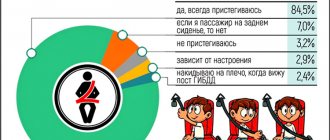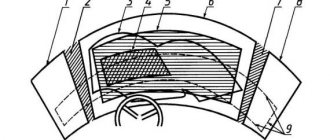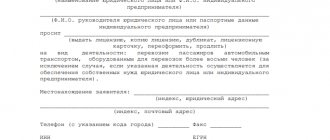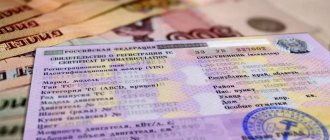Fine for not wearing a seat belt
Who is required to wear a seat belt? In short, everyone in the car wears a seat belt - the driver and passengers. According to traffic rules, the driver does not transport passengers if they are not wearing seat belts. If the car is designed with belts, you cannot drive without them.
These rules are not a formality. According to the traffic police, in 2021, 19% of drivers killed in car accidents did not use seat belts. Among passengers, 22% were also not wearing seat belts at the time of the accident. Driving without seat belts increases the likelihood of a fatal accident, so they must be worn at all times.
Who is fined? You can be fined:
- driver - for driving without a seat belt, unbelted passengers or a child without a child seat;
- the passengers themselves - for not fastening their seat belts.
How is a violation detected? Traditionally, a traffic police inspector fines someone for not wearing a seat belt. He sees that the driver is driving without a belt, stops him and draws up a report.
In Moscow, since the end of 2021, fines from cameras for seat belts have appeared - 8 devices in different areas of the city can record this violation automatically. The camera takes up to 25 photos per second and sends them to the server. The materials are studied by a computer that has been trained to identify the steering wheel, hands and seat belt in the photo. If the belt is not visible in the pictures, the computer generates material about the violation - based on it, the traffic police officer draws up a resolution.
If the fine for not wearing a seat belt comes from a camera, the resolution will contain a photo of the violation. The driver’s face is not visible on it, but the traffic police keeps the original photo in case of appealing the fine
Fines for not wearing a belt
The measure of responsibility is determined by the provisions of Art. 12.6 and 12.29 Code of Administrative Offences. The first prescribes a fine of one thousand rubles from the driver for not fastening their seat belts in 2021, and the second - from the passenger for violating their duties - 500 rubles or a warning.
When a fine is imposed for an unbelted child, several age groups and the conditions of the offense are taken into account:
- a child under seven years of age must be transported using a certified restraint device;
- from seven to twelve years of age, children can ride in the back seat in special seats or fastened with seat belts equipped with adapters;
- When children twelve years of age and older are in the car, general rules apply.
If the established procedure for transporting children is violated, the driver is responsible, and during organized group trips - the officials and legal entities that provided the vehicles. Article 12.23 of the Code of Administrative Offenses provides for fines of 3,000, 25,000 and 100,000 thousand rubles, respectively.
Advice! If traffic police officers did not video record the offense, it will not be possible to challenge the decision on this basis - for an administrative penalty, it is enough to reflect the event in the protocol.
Fine amount in 2021
Fine for not fastening a seat belt for the driver. For driving without a seat belt or transporting unbelted passengers, you will be fined 1,000 rubles. This amount does not increase if passengers in addition to the driver are not wearing seat belts. But a decree can be issued several times a day at different posts if, after the first fine, the driver does not wear a seat belt.
The exception is when the car is not structurally provided with belts, as, for example, happens on vintage cars. If the car has belts, but they have been removed, the driver will be additionally fined 500 rubles for the malfunction.
Fine for not fastening a seat belt for a passenger. If a passenger does not wear a seat belt, he is violating traffic rules. The fine for this is 500 rubles or a written warning. Each unbelted passenger can be fined individually.
Fine for unbelted children. If you transport a child under 7 years old without a child seat, the driver will be fined 3,000 rubles. For legal entities, such as taxis, the penalty is stricter - 100,000 rubles. We wrote in detail about fines for driving without a child seat.
Let's look at all possible situations.
| Situation | What is the fine and for whom? | Articles of the Administrative Code |
| The driver did not fasten his seat belt before driving | 1000 rubles to the driver | 12.6 |
| The passenger did not fasten his seat belt before driving | 1000 rubles for the driver, 500 or a warning for the passenger | 12.6, 12.29 part 1 |
| The driver did not fasten his seat belt before driving, he just put on his seat belt. | 1000 rubles to the driver | 12.6 |
| The driver and passenger were not wearing seat belts in a stationary car. | No penalty | — |
| A child under 7 years old travels without a child seat | 3000 rubles to the driver | 12.23 h. 3 |
| A child under 7 years old rides in a child seat, but is not fastened | 3000 rubles to the driver | 12.23 h. 3 |
| A child 7-12 years old rides in the back seat without a child seat, but is buckled up | No penalty | — |
| A child 7-12 years old rides in the front seat without a child seat | 3000 rubles to the driver | 12.23 h. 3 |
| A passenger travels unbelted in a taxi or bus | 1000 rubles for the driver, 500 or a warning for the passenger | 12.6, 12.29 part 1 |
| A passenger rides unbelted in the back seat | 1000 rubles for the driver, 500 or a warning for the passenger | 12.6, 12.29 part 1 |
| Seat belts in the car are broken or missing | 500 rubles to the driver | 12.5 part 1 |
Technical requirements for seat belts in 2021
According to the technical regulations on the safety of using wheeled vehicles, all vehicles must be equipped with seat belts.
This regulation came into force last fall, but not all of its provisions are already in effect. One of these sections relates to the installation of seat belts in cars. Let's look at some of the nuances associated with installing these protective devices.
Today, the use of seat belts is regulated by the following article 12.6. “Violation of the rules for using seat belts or motorcycle helmets” of the Code of Administrative Offences. It states that “driving a vehicle by a driver who is not wearing a seat belt, transporting passengers who are not wearing seat belts, if the design of the vehicle provides for seat belts, as well as driving a motorcycle or transporting passengers on a motorcycle without motorcycle helmets or wearing unfastened motorcycle helmets entails penalties.” an administrative fine in the amount of one thousand rubles.”
We recommend
“How to find out parking fines: all methods” More
In this article, what is important is not “the imposition of an administrative fine,” but the phrase “if the design of the vehicle provides for seat belts.” The meaning of this expression indicates that it is currently permitted to use a vehicle in which the design does not provide a seat belt.
In addition, the document additional to the Russian Federation Traffic Regulations “Basic provisions for the approval of vehicles for operation” talks about the requirements regarding seat belts, for example, paragraph 4.1 states that in buses for transporting passengers in intercity traffic, seating areas must be equipped with belts security.
And in paragraph 7.9 of the document “List of malfunctions and conditions under which the operation of vehicles is prohibited” it is written that you cannot use a car if it “does not have seat belts and (or) seat head restraints, if their installation is provided for by the design of the vehicle or “ Basic provisions for the admission of vehicles to operation and the responsibilities of officials to ensure road safety.”
The vehicle is checked for compliance with these requirements during a technical inspection.
Conclusion: today seat belts must be mandatory in vehicles where they are provided for by design, as well as in intercity buses, regardless of design.
In what cases is a fine subject to appeal?
A fine for driving without a seat belt or an unrestrained passenger can rarely be contested, especially if the driver actually violated the rule. But there are four situations when it's worth a try.
Another person was driving. It happens that a car owner gave a car to a brother or friend, but he violated it. The owner of the car will receive a fine for driving without a seat belt. In order not to pay for another person, send a complaint to the traffic police and attach to it the evidence of the real driver and a copy of the insurance policy, if the offender is registered there.
I received a fine for selling a car. This often happens when the buyer signs an agreement, transfers money, but does not re-register the car in his name. The previous owner continues to receive fines. To correct this, attach to the complaint the purchase and sale agreement and the vehicle acceptance certificate, if any. At the same time, deregister the sold car - we wrote about how to do this.
The driver took off his belt after stopping. Sometimes the inspector notices that there is no belt after the car has stopped. The reason may be that the driver unfastened it to get documents. It is difficult to prove the case in this situation - you need recordings from a video recorder that records what is happening in the cabin.
The camera was wrong. With the advent of cameras that record fines for belts, there will certainly be erroneous decisions. If the photo shows that the driver’s belt is on or it blends in with dark clothing, feel free to complain.
Is it now compulsory to wear seat belts in the city? | Moscow
The procedure for obtaining a temporary residence permit is established by Order of the Federal Migration Service of Russia dated April 22, 2013 N 214 “On approval of the Administrative Regulations for the provision by the Federal Migration Service of the state service for issuing temporary residence permits in the Russian Federation to foreign citizens and stateless persons.”
It is installed there:
19. To obtain a permit, a foreign citizen submits to the territorial body of the Federal Migration Service of Russia at the place of intended residence or to the diplomatic mission or consular office of the Russian Federation in the state of his residence:
19.1. Application (Appendix No. 3 to the Administrative Regulations) in two copies.
19.2. 2 personal photographs, which are placed on the application, one on each copy, 35 x 45 mm in size in black and white or color with a clear image of the face from the front without a headdress. Stateless persons provide 3 photographs, 2 of which are placed on the application, one on each copy.
It is permitted to submit photographs wearing hats that do not hide the oval of the face by citizens whose religious beliefs do not allow them to appear in front of strangers without hats.
For citizens who constantly wear glasses, it is mandatory to take photographs with glasses without tinted lenses.
If technically possible, photographing and obtaining photographs can be carried out directly on the premises of the territorial body of the Federal Migration Service of Russia.
19.3. Identity document.
In accordance with Article 10 of the Federal Law, identification documents of a foreign citizen are a passport of a foreign citizen or another document established by federal law or recognized in accordance with an international treaty of the Russian Federation as an identification document of a foreign citizen.
19.4. A document issued by the authorized body of the state of permanent residence confirming the applicant’s lack of criminal record.
The document must not have been issued earlier than 3 months on the date of filing the application for a permit.
19.5. A residence permit or other document issued by an authorized body of a foreign state that confirms the residence of a foreign citizen outside the state of his nationality.
19.6. A document issued by an authorized body of a foreign state or an authorized healthcare institution of the Russian Federation, confirming the absence of drug addiction and infectious diseases that pose a danger to others, provided for in the list of infectious diseases that pose a danger to others and are grounds for refusal to issue or cancellation of a temporary residence permit foreign citizens and stateless persons, or a residence permit, or a work permit in the Russian Federation, approved by Decree of the Government of the Russian Federation of April 2, 2003 N 188, as well as a certificate confirming that the applicant does not have a disease caused by the human immunodeficiency virus (HIV) infections).
Next is the “list”.
19.7. A document confirming the foreign citizen’s command of the Russian language, knowledge of the history of Russia and the fundamentals of the legislation of the Russian Federation. Such documents include: a certificate of proficiency in the Russian language, knowledge of the history of Russia and the fundamentals of the legislation of the Russian Federation; a state-issued document on education (at a level not lower than basic general education), issued by an educational institution on the territory of a state that was part of the USSR before September 1, 1991; document on education and (or) qualifications issued to persons who have successfully passed the state final certification on the territory of the Russian Federation since September 1, 1991.
In accordance with Article 15.1 of the Federal Law. Next - “a document confirming the foreign citizen’s command of the Russian language, knowledge of the history of Russia and the fundamentals of the legislation of the Russian Federation.”
This document is not provided by applicants - men who have reached the age of sixty-five years, and women who have reached the age of sixty years, as well as participants in the State program and family members.
20. A foreign citizen to whom a permit may be issued without taking into account the quota, along with the documents specified in paragraphs 19.1 - 19.7 of the Administrative Regulations, submits:
Clause 3 of Article 6 of the Federal Law.
20.1. Born on the territory of the RSFSR and formerly a citizen of the USSR or born on the territory of the Russian Federation - a birth certificate issued on the territory of the RSFSR or the Russian Federation by a civil registry office. In the absence of the specified certificate, a document confirming birth on the territory of the RSFSR and previous status as a citizen of the USSR is a passport of a citizen of the USSR of the 1974 model, in which the corresponding entries are made.
20.2. Recognized as disabled, having a capable son or daughter who is a citizen of the Russian Federation - a birth certificate and a passport of a citizen of the Russian Federation, identifying the identity of a citizen of the Russian Federation on the territory of the Russian Federation, son or daughter, as well as documents confirming the applicant’s incapacity for work (for example: a certificate about disability, issued by an institution of the state medical and social examination service or a competent authority of a foreign state, a pension certificate).
Next - “passport of a citizen of the Russian Federation”.
20.3. Having at least one disabled parent who is a citizen of the Russian Federation - a birth certificate and a passport of a citizen of the Russian Federation of a disabled parent, as well as documents confirming the parent’s disability (for example: a certificate of disability issued by an institution of the state medical and social examination service, a pension certificate ).
20.4. Married to a citizen of the Russian Federation who has a place of residence on the territory of the Russian Federation - a marriage certificate and passport of the spouse - a citizen of the Russian Federation.
20.5. Having made investments in the Russian Federation - a letter from the head of the organization that attracted investments about the investment by this foreign citizen in the amount established by the Government of the Russian Federation.
Subclause 5 of clause 3 of Article 6 of the Federal Law.
20.6. Entering military service - a contract for military service.
20.7. Having a child who is a citizen of the Russian Federation - a birth certificate of the child. The presence of citizenship of the Russian Federation in a child is certified by documents provided for by the legislation of the Russian Federation.
20.8. Having a son or daughter who has reached the age of eighteen years, is a citizen of the Russian Federation and has been declared incompetent or limited in legal capacity by a court decision that has entered into legal force - a birth certificate and passport of a citizen of the Russian Federation of the son or daughter, as well as a copy of the court decision on declaring a person incompetent or limited in legal capacity.
21. To obtain a permit for a foreign citizen who has not reached the age of 18, or a foreign citizen who has reached the age of 18 and is recognized as incompetent or limited in legal capacity, a parent, adoptive parent, guardian or trustee submits to the territorial body of the Federal Migration Service of Russia at the place of intended residence or to the diplomatic mission or consular office of the Russian Federation in the state of their residence in relation to the specified persons:
21.1. Application (Appendix No. 4 to the Administrative Regulations) in two copies.
21.2. Photos in accordance with the requirements provided for in paragraph 19.2 of the Administrative Regulations.
21.3. Identity document.
21.4. A birth certificate, if the application is submitted by one of the parents (adoptive parents), or a document confirming the powers of the guardian or trustee.
21.5. A document in accordance with which a foreign citizen is recognized as incompetent or limited in legal capacity, issued by an authorized body of a foreign state or the Russian Federation, if the application is submitted in relation to a foreign citizen recognized as incompetent or limited in legal capacity.
21.6. Lost power. — Order of the Federal Migration Service of Russia dated February 24, 2015 N 71.
21.7. A document issued by the authorized body of the state of permanent residence, confirming the absence of a criminal record of a foreign citizen who has reached the age of 14.
21.8. A residence permit or other document issued by an authorized body of a foreign state that confirms the residence of a foreign citizen outside the state of his nationality.
21.9. A document issued by an authorized body of a foreign state or an authorized healthcare institution of the Russian Federation, confirming the absence of drug addiction and infectious diseases that pose a danger to others, as specified in the list, as well as a certificate confirming that the applicant does not have a disease caused by the human immunodeficiency virus (HIV infection).
21.10. The corresponding document provided for in paragraphs 20.1 - 20.8 of the Administrative Regulations, confirming the possibility of obtaining a permit without taking into account the quota.
22. To obtain a permit, a foreign citizen who arrived in the Russian Federation in a manner that does not require a visa submits to the territorial body of the Federal Migration Service of Russia at the place of intended residence:
22.1. Application (Appendix No. 3 to the Administrative Regulations) in two copies.
22.2. Photos in accordance with the requirements provided for in paragraph 19.2 of the Administrative Regulations.
22.3. Identity document.
22.4. The corresponding document provided for in paragraphs 20.1 - 20.8 of the Administrative Regulations, confirming the possibility of obtaining a permit without taking into account the quota.
22.5. Within thirty days from the date of submission of the application - documents confirming the absence of drug addiction and infectious diseases that pose a danger to others included in the list, as well as a certificate confirming the absence of a disease caused by the human immunodeficiency virus (HIV infection).
Based on the written request of the applicant, upon presentation of documents confirming valid reasons for missing the established deadline, the head of the territorial body of the Federal Migration Service of Russia makes a decision to extend this period by means of a resolution on the application. The said appeal is submitted by the applicant no later than the end of the period for providing the public service.
22.6. A document confirming the foreign citizen’s command of the Russian language, knowledge of the history of Russia and the fundamentals of the legislation of the Russian Federation.
This document is not provided by applicants - men who have reached the age of sixty-five years, and women who have reached the age of sixty years, as well as participants in the State program and family members.
23. To obtain permission for a foreign citizen who arrived in the Russian Federation in a manner that does not require a visa, who has not reached the age of 18, or who has reached the age of 18 and is recognized as incompetent or limited in legal capacity, the parent, adoptive parent, guardian or trustee submits to the territorial body of the Federal Migration Service of Russia at the place of intended residence in relation to the specified person:
23.1. Application (Appendix No. 4 to the Administrative Regulations) in two copies.
23.2. Photos in accordance with the requirements provided for in paragraph 19.2 of the Administrative Regulations.
23.3. Identity document.
23.4. A birth certificate, if the application is submitted by one of the parents (adoptive parents), or a document confirming the powers of the guardian or trustee.
23.5. A document in accordance with which a foreign citizen is recognized as incompetent or limited in legal capacity, issued by an authorized body of a foreign state or the Russian Federation, if the application is submitted in relation to a foreign citizen recognized as incompetent or limited in legal capacity.
23.6. Within thirty days from the date of submission of the application - documents confirming the absence of drug addiction and infectious diseases that pose a danger to others included in the list, as well as a certificate confirming the absence of a disease caused by the human immunodeficiency virus (HIV infection).
23.7. The corresponding document provided for in paragraphs 20.1 - 20.8 of the Administrative Regulations, confirming the possibility of obtaining a permit without taking into account the quota.
24. The originals of the documents specified in paragraphs 19.3, 19.5, 19.7, 20.1 - 20.8, 21.3 - 21.5, 21.8, 22.3, 22.6, 23.3 - 23.5 of the Administrative Regulations must be returned to the applicant, and their copies and a notarized translation into Russian provided by the applicant are attached to the application.
Copies of documents are certified by the employee receiving applicants.
25. If the applicant and his relatives have different surnames, family relationships, information about which is necessary for the provision of public services, are proven by appropriate additionally submitted documents (for example: birth certificate, marriage certificate).
26. Official documents and acts issued by organizations and institutions of foreign states that are not parties to the Convention Abolishing the Requirement for Legalization of Foreign Documents, signed in The Hague on October 5, 1961, unless otherwise established by the current international treaties of the Russian Federation with foreign states, are accepted for consideration when the presence of consular legalization, which is carried out by consular offices of the Russian Federation abroad and the Consular Department of the Russian Ministry of Foreign Affairs.
Bulletin of International Treaties, 1993, No. 6.
27. Official documents and acts issued by organizations and institutions of foreign states - parties to the Hague Convention of October 5, 1961, abolishing the requirement for legalization of foreign official documents, unless otherwise established by the current international treaties of the Russian Federation with foreign states, are accepted for consideration if they contain an apostille certifying the authenticity of the signature, the position of the person who signed the document, and the authenticity of the seal or stamp with which this document is certified.
28. Documents drawn up in a foreign language must be translated into Russian. If the document is drawn up in several languages and Russian is not among them, then a translation from one language of the applicant’s choice is provided. The accuracy of the translation or the authenticity of the translator's signature must be notarized.
How to appeal a fine
Appeal procedure. You can file a complaint against a fine decision within the first 10 days from the date of the document. The complaint will have to be sent by regular mail to the regional traffic police department.
If the complaint is rejected, you can go to court. Before doing this, we recommend that you contact a lawyer who will file a claim.
Sample complaint. In your application please indicate:
- addressee - the position and name of the head of the traffic police department, whose employee issued the protocol. It can be clarified by phone on the document or you can simply send a complaint to the regional head of the inspection;
- your details - name and phone number;
- circumstances - when and where the inspector recorded the violation and why you do not agree with it;
- a request to cancel the decision;
- applications that prove innocence.
Sample application to appeal a fine from a camera
Remember: responsibility for not fastening your seat belt
- In the car, the driver and all passengers are fastened in the front and rear seats.
- If you don’t wear your seat belt, you will be fined by the traffic police inspector, and in Moscow you may receive a fine from a camera.
- The fine for the driver is 1000, for the passenger - 500 rubles.
- For transporting a child under 7 years old without a seat, you will be fined 3,000 rubles.
- You can appeal the fine if you were not the driver, the car has already been sold, you removed the belt after stopping, or the camera made a mistake.
- To challenge the decision, send a complaint to the traffic police and attach evidence to it. If you receive a refusal, go to court.
All articles by the author: Ilya Novikov
Seat belts and correct seat positions
Seat belts are an effective means of protecting the driver and passengers from serious injuries in road accidents.
The front and rear side seat belts are retractable, but the middle rear passenger's belt is non-retractable. The front seat belts are equipped with seat belt pre-tensioners in the event of a severe frontal impact. In other cases, the device does not work.
Warning:
The warranty period for the belt pre-tensioner is 15 years. After this period, the seat belts must be replaced.
The belt pre-tensioner operates only once. After this, the seat belts must be replaced.
Check the condition of the belts regularly. If the belts show scuffs, tears, or other damage, be sure to replace the belts. If the belts become dirty, wash them with a mild soap solution. Never iron the belts with an iron.
Warning:
Replace belts only in specialized workshops.
Do not fasten a seat belt on a child sitting on the lap of a rear passenger.
Be sure to replace belts that have been subjected to critical stress as a result of an accident.
Correct position of the front seats
1. Before fastening your seat belt, adjust the front seat and head restraint to the correct position. The correct distance between the steering wheel and the driver should be at least 25 cm (for the front passenger seat - at least 25 cm between the front panel and the chest).
2. Adjust the seat longitudinally so that you can press the pedals all the way, with your legs slightly bent.
3. Adjust the seatback angle so that you can reach the highest point of the steering wheel by bending your arms slightly.
4. Adjust the seat headrest so that its top edge is, if possible, in line with the crown of your head.
Instructions for adjusting the seat positions can be found here.
Warning:
The seat backs should not be tilted too far back while the vehicle is moving, as this will limit the effectiveness of the seat belts and the Airbag system. Risk of serious injury!
Correct position for rear seat passengers
1. Rear seat passengers must sit upright, keep their feet in front of the rear seat cushions, and be properly restrained.
2. Adjust the head restraints in the same way as described for those sitting in front.
3. If children are transported in the car, then it is necessary to use special devices that hold the child in the correct position (child seats).
Fastening seat belts
1. To fasten the belt, pull it out smoothly and insert the tongue into lock 1 until it clicks. At the same time, make sure that the belt does not twist. The upper branch 2 of the belt should pass approximately through the middle of the shoulder (in no case through the neck), and the lower branch 3 should fit tightly around the hip part of the body.
Pregnant women also need to wear their seat belt according to the following pattern, where the lap belt should fit as low as possible around the hip area of the body in order to prevent the belt from pressing on the lower abdomen.
2. To adjust the height of the upper part of the front belt, press the upper fastener 1 and move it in the desired direction (up or down). Then jerk check the fixation of the upper belt fastening in the desired position (2 – middle pillar of the body; 3 – seat belt).
3. To unfasten the belt, press the buckle button. The tongue will be released from the lock under the action of the spring.
4. Since the rear middle passenger belt is not retractable, it needs to be adjusted. A properly adjusted seat belt should fit snugly against the occupant. To lengthen the belt, turn its buckle 1 perpendicular to the belt and pull the long end 2.
5. To shorten the belt, pull the belt by the free end 1. After adjustment, insert the free end of the belt into the plastic loop 2 (3 – lock).
Warning:
For safety reasons, the rear middle passenger's seat belt, which is not in use, must be fastened.
When fastening your seat belt, make sure that no hard or breakable objects in your pockets get caught under it - they can cause injury.
Source: https://carpedia.club










